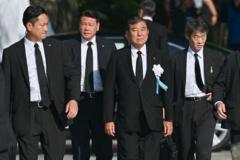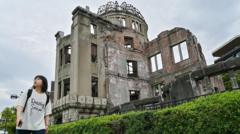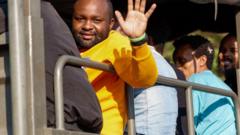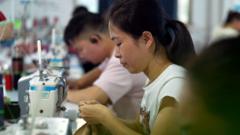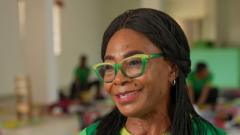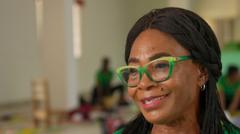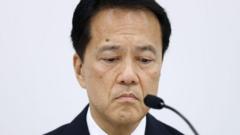The BBC reports on the harrowing experiences of Korean survivors of the Hiroshima atomic bombing who live in Hapcheon, South Korea, where they confront deep-seated trauma, disfigurement, and a fight for recognition amidst decades of neglect.
The Untold Stories of Korean Survivors from Hiroshima: Echoes of Lingering Pain

The Untold Stories of Korean Survivors from Hiroshima: Echoes of Lingering Pain
Eighty years after the Hiroshima bombing, South Korean survivors and their descendants continue to bear the scars of the past, battling societal stigma and advocating for acknowledgment.
The scenes of catastrophe on August 6, 1945, remain haunting for the survivors of the Hiroshima atomic bombing. Among them is Lee Jung-soon, now 88, whose childhood was transformed when the skies above Hiroshima were filled with chaos and destruction from the first-ever atomic detonation. Her memories are mostly filled with tears and utter shock, as she recalls her father urging her family to flee right before the bomb fell, causing devastation equivalent to 15,000 tons of TNT and killing approximately 70,000 people instantly.
While the bombings have been examined extensively over the years, less focus has been placed on an often overlooked group: the roughly 20% of immediate victims who were Koreans. Living in Hiroshima during Japanese colonial rule, an estimated 140,000 Koreans were subjected to forced labor and exploitation. Their aftermath of suffering didn't end with the bomb; as survivors, they face long-lasting health issues and a battle for acknowledgment and justice that remains unresolved.
In Hapcheon, a region dubbed "Korea's Hiroshima," many survivors like Lee and fellow survivor Shim Jin-tae, aged 83, share stories of a grim history often forgotten. "No one takes responsibility," says Shim, expressing the collective sentiment of the survivors as they grapple with disfigurements and illnesses attributed to their exposure to radiation. Their fight unfolds against a backdrop of silence from both American and Korean governments, as years pass without a formal apology.
The survivors' lives are marked by physical ailments, with Lee suffering from skin cancer and Parkinson’s disease, compounded by the health struggles of her son who is also facing kidney failure. The Ministry of Health and Welfare's efforts towards gathering genetic data from survivors are met with skepticism, as many feel that proving their plight has become an exhausting and daunting task.
Life for these survivors did not improve upon returning to Korea; many encountered stigma, branded as cursed or disfigured. The societal rejection led some to remain silent, as survival took precedence over pride. They faced hardships that manifested as health issues — from skin diseases to heart conditions — without a clear understanding of their origins, complicating recognition of their status as victims.
Second-generation survivors like Han Jeong-sun recount personal tragedies, dealing with disabilities both in themselves and their children, compounded by a lack of acknowledgment from authorities. Despite extensive evidence of illness within survivor families, there remains a bureaucratic hesitance to fully accept or validate their experiences.
Recent developments, like a visit from officials in Hiroshima, highlight an ongoing complexity in the conversation around acknowledgment and reconciliation. Despite gestures made by Japanese officials, the absence of a formal apology continues to be a source of pain. Activists argue that reconciliation cannot be genuine without addressing Japan's historical treatment of Koreans.
As survivors pass away, the urgency to tell their stories and secure their legacies intensifies. For figures like Shim, memory holds paramount importance; he emphasizes that forgetting the past ensures such atrocities could recur. Amid ongoing struggles, the resilient voices of these survivors serve as poignant reminders of pain, survival, and the quest for justice — a battle that resonates through generations.


